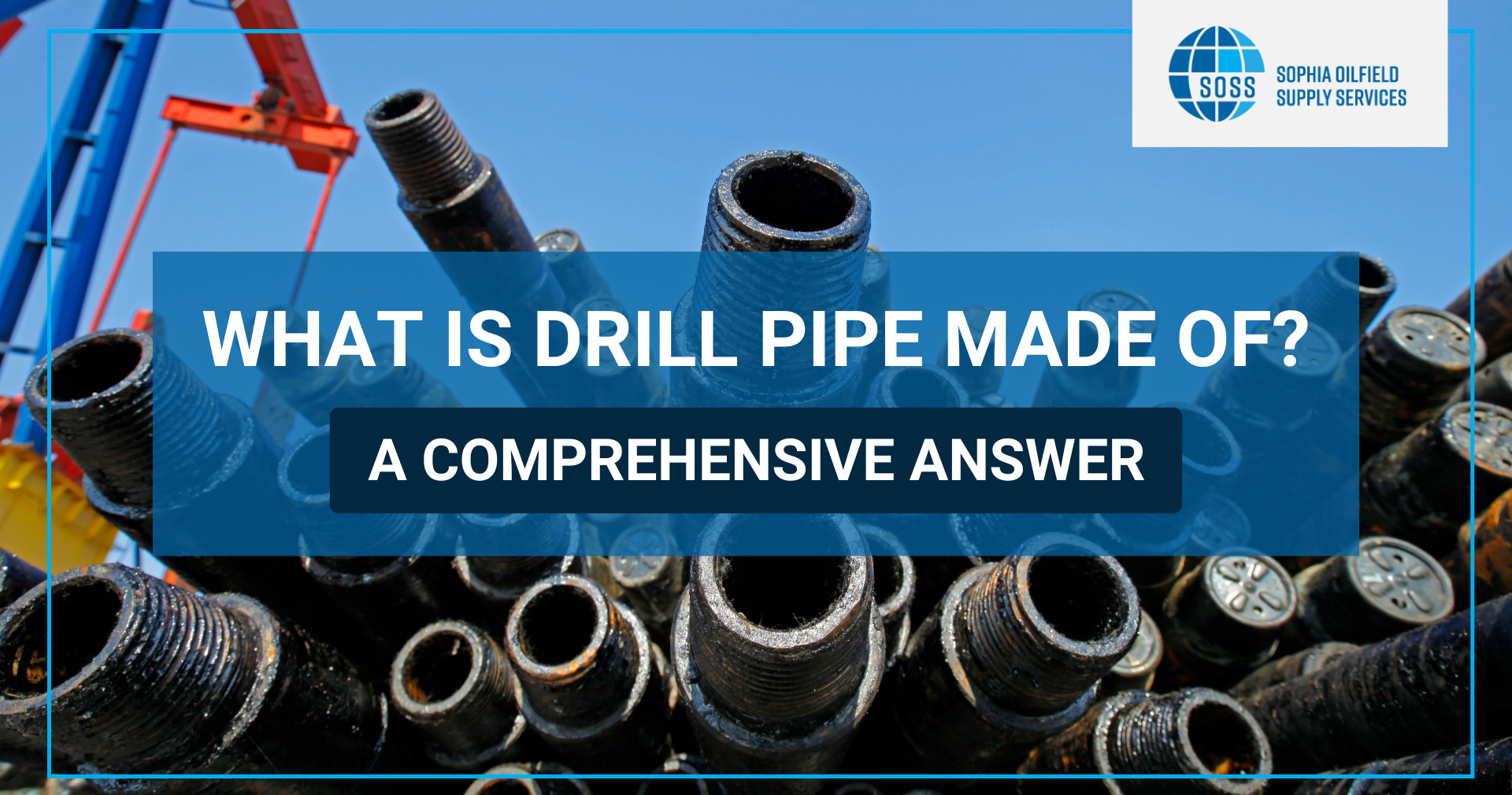Drill pipe is made of high-strength low-alloy (HSLA) steel which is perfect due to its strength, weight, and resistance to the harsh environment. The specific grade of steel to be used is determined according to the application. If we see the grade of steel used in deep wells, it is of higher yield strength and its persistent nature to withstand deformation over time. However, in the wells used in remote locations where weight can be an issue, lightweight-grade steel is used which can be transported easily.
In most cases, the pipe’s threaded ends, called tool joints, are made from the same or stronger grade of HSLA steel. This retains a strong but safe link of the entire drilling string; that is, the long hollow column that provides the way through which the drill bit is sent to the wellbore. It may be coated with some specified type of pipe coating or with neoprene depending on operations and the type of environment. This kind of coating gives an additional covering to the customers against the conditions that are always fairly hostile, particularly inside or around the borehole, as a result of the hydrogen sulfide gas, which tends to degrade the steel or even slowly erode it. Here also is the use of some of the right grades of HSLA steels in the manufacture of drill pipe together with the right strength giving them protection from corrosive conditions of salt water when piercing under the ground in considerably deep levels.
Oil drilling operations rely on a myriad of equipment to extract valuable resources from beneath the Earth’s surface. Among these crucial components are drill pipe, which form the backbone of the drill string. Constructed from durable materials such as seamless steel, these pipes are engineered to withstand the rigors of drilling operations in harsh environments. Tool joints connect the individual sections of drill pipe, providing stability and enabling efficient transmission of torque and drilling fluid downhole.
What are some of the types of Material Grades used in manufacturing drill pipe?
There are different sizes of drill pipe that can be found. Drill pipe are manufactured from high-strength low alloy (HSLA) steel, essentially having a varying range of grades available to meet the conditions of a wide variety of drilling programs. Some are designed to give high strength for deep well applications while others specify low weight for easy handling in remote areas. They are yielded as strong, and with thick walls, which usually decide the capability of material generally not getting into the permanent deformation state. They will on account of other factors decide which is the grade most apt for the case. Usually, the drilling operations are designed in such a way that knowledge of variation in place is there, allowing effective improvements in efficiency to be implemented in cost.
Drill collar, made from heavy-duty steel, adds weight to the drill string, aiding in the penetration of the drilling bit into the earth. Oil casing, another essential component, lines the wellbore, providing structural support and preventing collapse. Various types of steel pipe, including stainless steel and carbon steel, are employed throughout the drilling process, each tailored to specific requirements such as yield strength and wall thickness. Coated steel pipe, such as galvanized steel, protects against corrosion, extending the lifespan of critical equipment. Drill collars, made from heavy-duty steel, add weight to the drill string, aiding in the penetration of the drilling bit into the earth. Oil casing, another essential component, lines the wellbore, providing structural support and preventing collapse. . Various types of steel pipe, including stainless steel and carbon steel, are employed throughout the drilling process, each tailored to specific requirements such as yield strength and wall thickness. Coated steel pipe, such as galvanized steel, protects against corrosion, extending the lifespan of critical equipment.
Additionally, drilling operations utilize a range of accessories, from drill rods to pipe fittings, to optimize efficiency and safety. From the drill rig to the bore, every component plays a vital role in the extraction of precious resources from deep beneath the Earth’s surface.With standards set by organizations like the American Petroleum Institute (API), the oil country tubular goods (OCTG) industry ensures the reliability and performance of equipment used in oil drilling.
What is the Manufacturing Process of drilling pipe?
The process of manufacturing the drilling pipe is as follows:
- Smelting and refining: The raw materials are heated up in a furnace until they come to molten temperatures. Steel, after smelting, is in its liquid form so further heating is important for removal of impurities. This is done through refining.
- Molten steel flows continuously in the form of a long slab, and then the specified dimensions in terms of thickness and width for the body of the drill pipe are finalized during hot rolling.
- Heat treatment: The steel received after rolling is subjected to its recent heat treatment processes, including quenching and tempering, which shape its internal structure. This steel shows increased strength, toughness, and weldability.
- Finished steel will be carefully inspected for the accuracy of dimensions, surface quality, and mechanical properties.
How does Corrosion affect the drill pipe?
The drill pipe is perpetually threatened by corrosion from the sour gas, such as hydrogen sulfide, which will tend to deteriorate the pipe material in the harsh downhole environment, ultimately causing pipe failure. The steel grade itself can be designed to be more resistant to corrosion. Addition of nickel-chromium and a few other coatings may be added over the surface layer of the pipe so that they may further act as a barrier against corrosive attacks. With such a wide choice of material grade and combinations of coatings, drill pipe manufacturers can select the best one to ensure long-term performance while retaining safety through harsh downhole conditions.
What can be the Future Developments and Technologies associated with drill pipe?
All in the search for answers that would provide even more robust drilling means in the future. As for now, there might be more materials advances in drill pipe, maybe even composite materials that mix strength with the lightness of some other property. On the other hand, research can be carried out to bring some properties of steel itself to some further extent to make even stronger austenitic-alloys specially planned for deeper boring which is more corrosion-resistant. They will spark revolutions in drilling practices, leading to resources that were not even possible a year before; in other words, they will push the boundaries of what was thought to be not possible far below the earth.
Conclusion:
The drill pipe are manufactured from the high-strength low-alloy (HSLA) steel and the grade is arbitrarily selected by the anticipated job’s needs. Therefore, shallow wells, or those in remote locations, may need lighter grades to reduce the tension force. Some other drill pipe have some extra layer of defense against corrosion through coatings of nickel-chromium alloys. All that adds up to a drill pipe that is strong and tough enough to resist intense pressures, apart from the extensive environment the drill pipe might be designed to experience. Drive the future of drill pipe materials, with a focus on strong, advanced composite materials or an evolved steel—a very balance of alloys strong and resistant enough to keep driving the envelope of what is possible in drilling.

